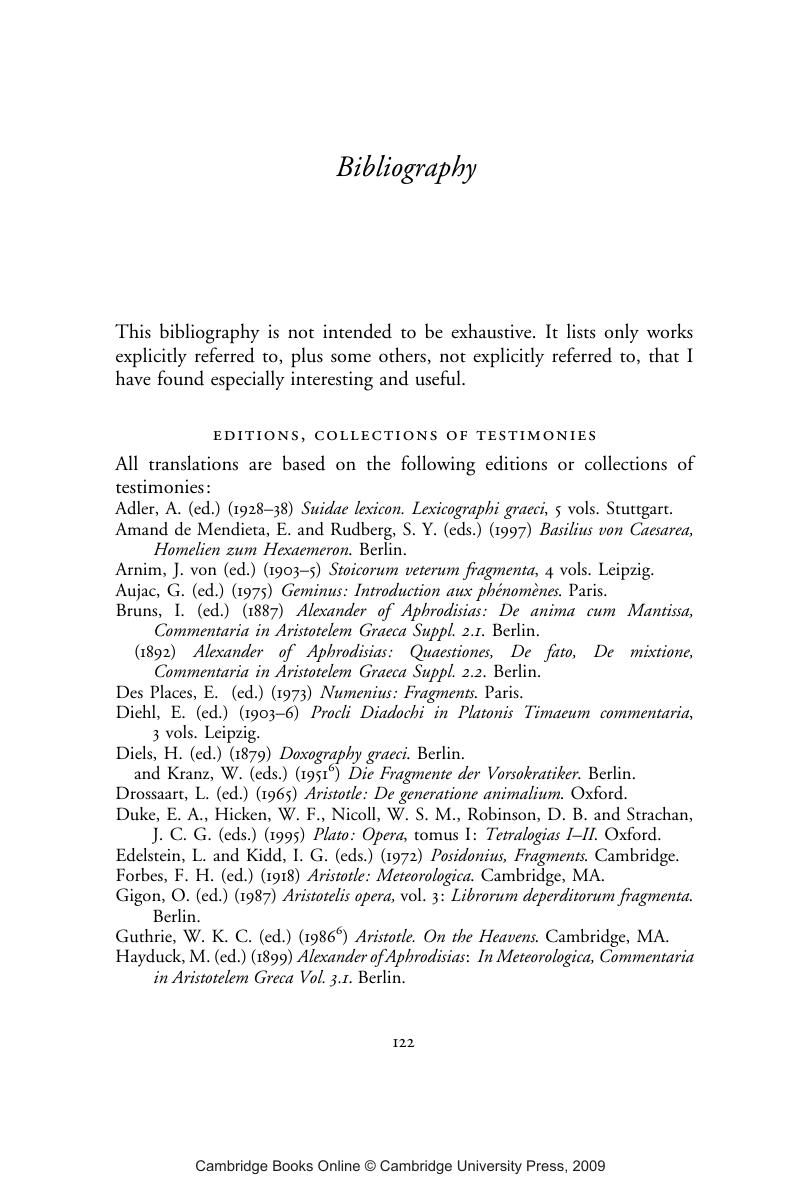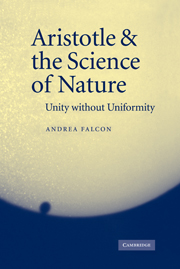Book contents
Bibliography
Published online by Cambridge University Press: 22 September 2009
Summary

- Type
- Chapter
- Information
- Aristotle and the Science of NatureUnity without Uniformity, pp. 122 - 129Publisher: Cambridge University PressPrint publication year: 2005



